Transportation Research Symposium(TRS)@Rotterdam
Krittanai(D2), Kota(M1), and Miyu(M1) attended the Transportation Research Symposium (TRS), a four-day academic conference held in Rotterdam, the Netherlands. Having two fellow lab members there helped me ease my nerves, especially since it was my first time presenting at a conference.
Preparing the poster was more challenging than I expected. Deciding what information to include and how to lay it out visually took a lot of thought. During the presentation, I realized that simply standing by the poster and hoping people would stop by wasn’t enough. Attracting interest required me to take the initiative and actively engage in conversation, which was a valuable lesson.I had a great time connecting with researchers from around the world. Their diverse perspectives and work inspired me in many ways. Outside the conference, I also enjoyed exploring the city and soaking in the local atmosphere. It was my first time in Europe, and the experience was both refreshing and memorable.
[Kanaoka]
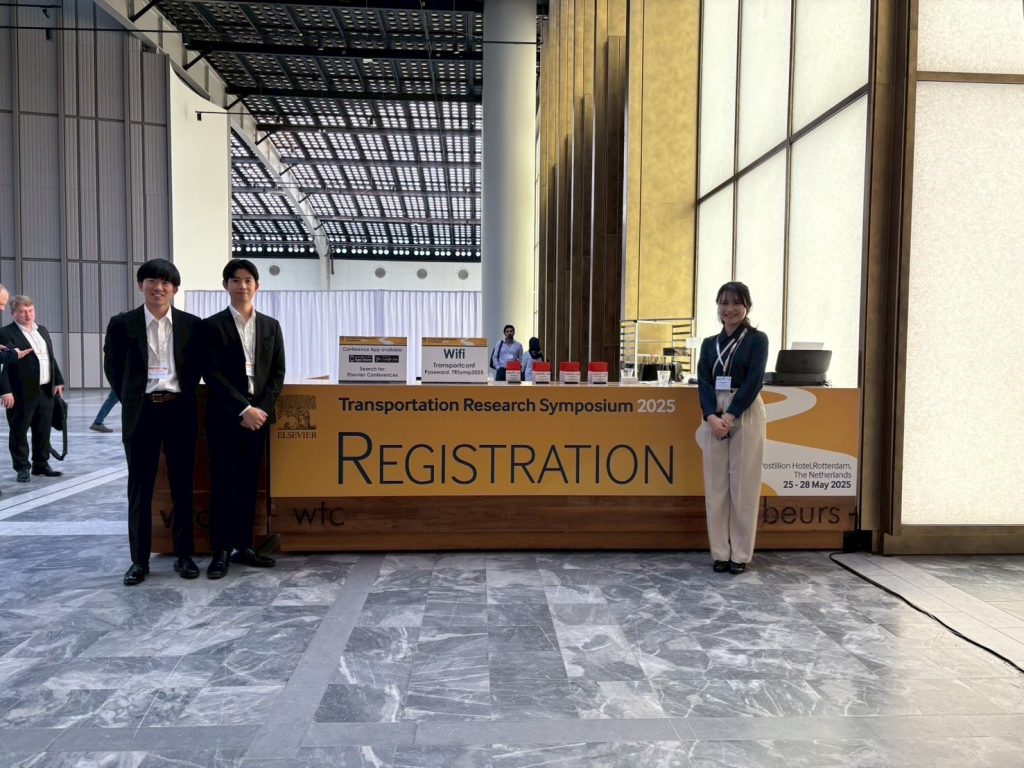
| Conferences Lab Life by Students
Dr. Keishi Fujiwara has come to the LIIS as a new project-appointed assistant professor
On May 1st, Dr. Keishi Fujiwara came from Hiroshima University as a new project-appointed assistant professor in our lab. Dr. Fujiwara is going to engage in our SATREPS project in Bangkok.
We held Fujiwara Sensei’s welcome party(sushi party) in the seminar room. We enjoyed the conversation with him a lot.
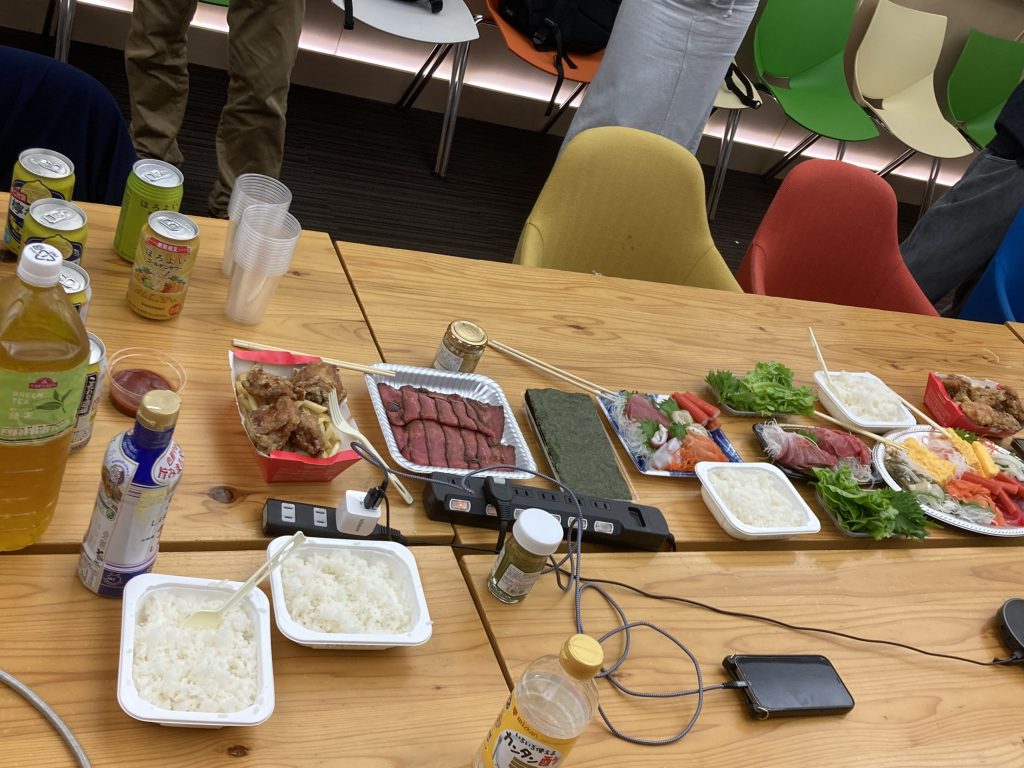
We look forward to engaging in meaningful research discussions with Dr. Fujiwara in seminars and to deepening our daily interactions within the lab community.
[Tanaka]
New member has come!!~2~
The new academic year has officially begun, and we held our first seminar of the year!
We are pleased to welcome three new undergraduate seniors—Haruto Ito, Yuta Saratani, and Manami Tanese—who have joined our laboratory as thesis students. With these new members, we are excited to see how the lab’s activities will unfold throughout the year.
At present, our laboratory consists of 14 student members. We will continue to share updates on our lab life on this website!
[Tanaka]
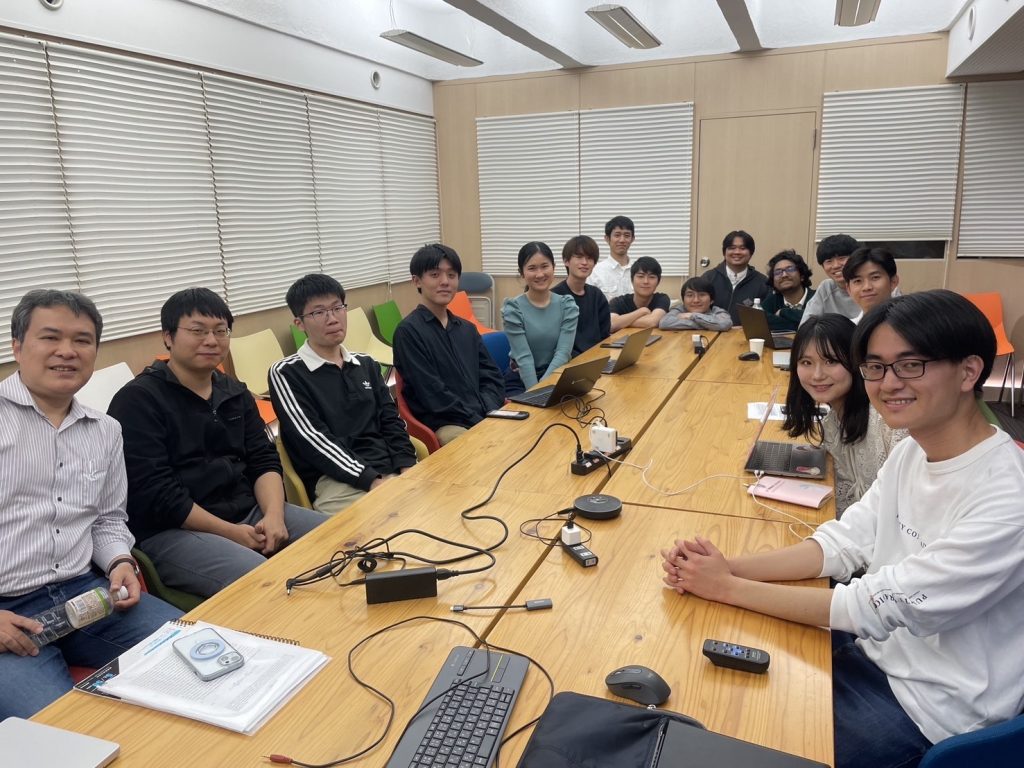
New member has come!!~1~
With the start of the new academic year, the towering big tree in front of Building of our lab is turning a fresh shade of green, signaling the arrival of spring.
We would like to share that Dr. Takao Dantsuji, who was with us as a research fellow until the end of March, has taken up a new position as a lecturer at Waseda University. Although his time with us was short, we are truly grateful for his contributions to our lab. We sincerely wish him continued success in his new role.
At the same time, we are pleased to welcome Dr. Qian Ge, who is one of our lab’s alumni, as a visiting associate professor.
In addition, three new master’s students continue their research in this lab following their undergraduate studies.
With new members joining us, our lab is becoming even more vibrant and energetic. We look forward to another fruitful year of research together.
[Tanaka]

Graduation Ceremony FY2024
Under the spring sky, the graduation ceremonies were held on March 24th and 25th.
M2 student Kaori Nakamura and B4 students Miyu Kanaoka, Shuntaro Tanaka, and Kota Matsunaga attended the ceremonies.
At the graduation ceremony, Professor Fukuda delivered a congratulatory address on behalf of the faculty.
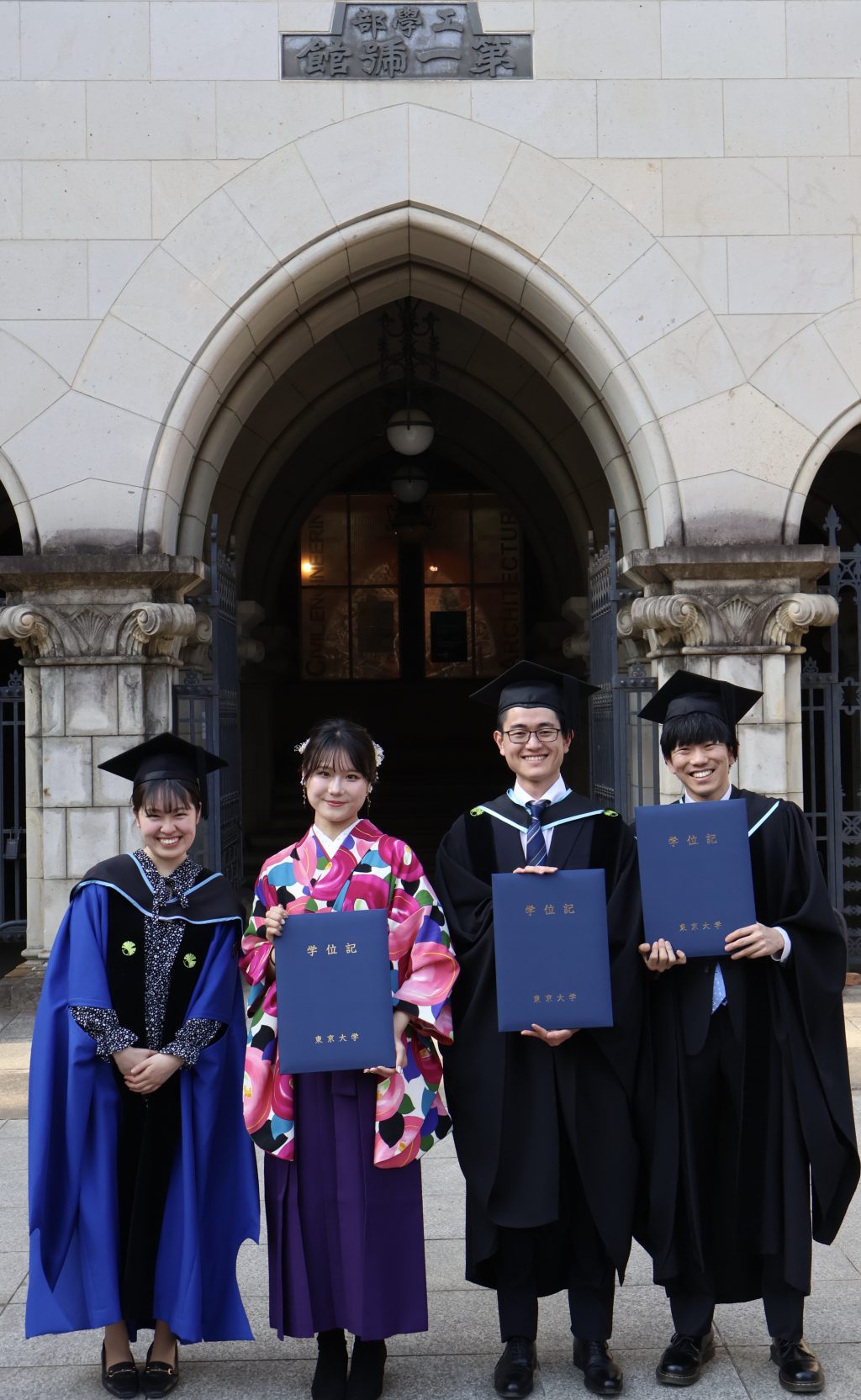
Congratulations on your graduation!
[Uemachi]
Site Visit@Hakodate
We accompanied the Committee on Infrastructure Planning and Management and participated in a site visit to observe transportation infrastructure in Hakodate.
The tour began with an explanation of the Hokkaido Shinkansen at the Japan Railway Construction, Transport, and Technology Agency (JRTT) Southern Hokkaido Office, followed by a visit to one of the construction sites.
Approximately 80% of the tunnel construction between Sapporo and Hakodate has been completed.
However, as reported recently, the project has been delayed due to the underground situation, which has forced engineers to carry out ground improvements and change construction methods.
Next, we visited the Nishi-Onuma section of the Onuma Tunnel in Nanae Town, where we observed the construction of the longest road tunnel in Hokkaido. Getting up close to the tunnel’s excavation face was a rare opportunity. I was particularly impressed by aspects not usually covered in class, such as the on-site facilities for producing concrete to ensure smooth progress and various efforts to reduce environmental impacts.
On the day of the visit, we toured the site in snowy conditions. Observing the work in such severe weather and seeing how closely the construction site was located to residential areas gave me an insight into the unique challenges of construction in heavy snowfall regions and the potential impact that construction delays can have on local development and daily life.
I look forward to seeing how the completion of both the Hokkaido Shinkansen and the expressway projects will connect Central and Southern Hokkaido and bring about changes in the region.

[Uemachi]
On-site Observation of the autonomous truck
This is Mega, a first-year master’s student.
On March 3rd, We had the opportunity to participate in an on-site observation of the autonomous truck demonstration experiment conducted at the Suruga-wan Numazu Service Area.
Through this observation, I strongly felt that autonomous trucks have great potential as a solution to the social issue of the shortage of truck drivers. From a technological perspective, I also learned that, compared to private vehicles—which must operate on unspecified routes under varying conditions—logistics trucks traveling on specific intercity highways offer a higher potential for practical implementation of autonomous driving.
Furthermore, I realized that introducing such new technologies requires new systems and frameworks.
For example, establishing pricing mechanisms and matching systems for the joint operation of autonomous logistics trucks will be an important challenge going forward. Additionally, the question of who bears responsibility in accidents or unforeseen circumstances must be carefully discussed, especially because infrastructure is directly connected to people’s lives and safety.
This site visit provided me with a valuable opportunity not only to see the potential of autonomous driving technology but also to reflect on the challenges and the need for institutional design required to implement such technologies in society.
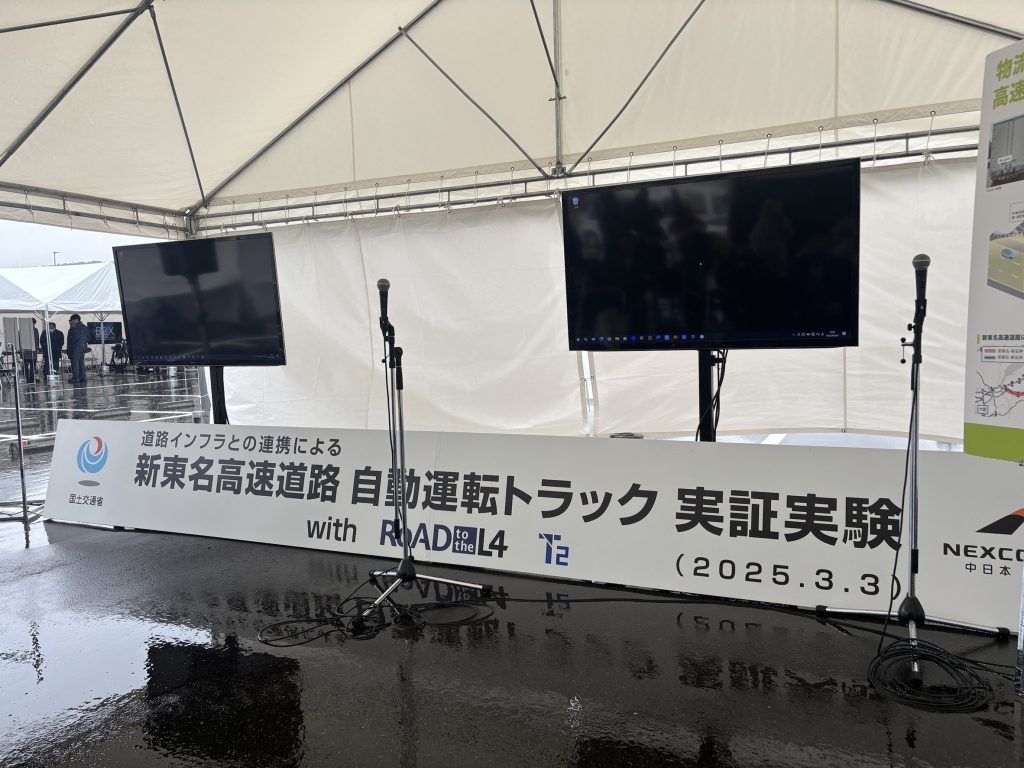
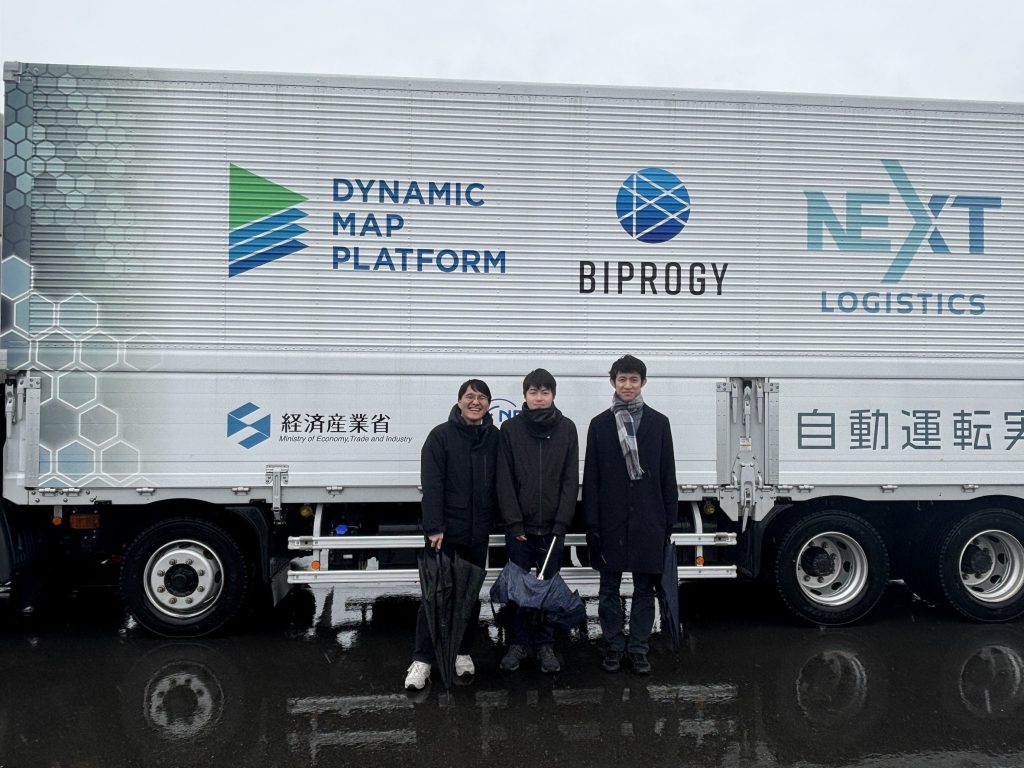 [Mega]
[Mega]
Field Research in Okinawa Metropolitan Area
This is Takeshi Uemachi, a first-year master’s student.
As part of my ongoing research on Poverty and Transportation in Okinawa, which I have continued since my undergraduate thesis, I stayed in Okinawa again for about three weeks to conduct fieldwork.
During the survey, I visited officials in charge of urban and transportation planning as well as welfare support in each municipality, along with local social welfare councils, to hear about the realities faced by people experiencing financial hardship. In addition, unlike the previous survey, I had the opportunity to visit professors from other faculties at the University of the Ryukyus and local children’s cafeterias. These visits helped me deepen my understanding of the poverty issue itself and the broader challenges faced by various groups.
Based on the insights I gained this time, I intend to carefully analyze the relationship between car-dependent society and social exclusion from both qualitative and quantitative perspectives. My goal is to contribute to a better understanding of the situation and propose policies that can help improve it.
I would like to express my sincere gratitude to Professor Kamiya, everyone in the lab, all those who kindly participated in the interviews despite this being a busy time of year, and especially to Professor Fukuda for providing me with this valuable opportunity.
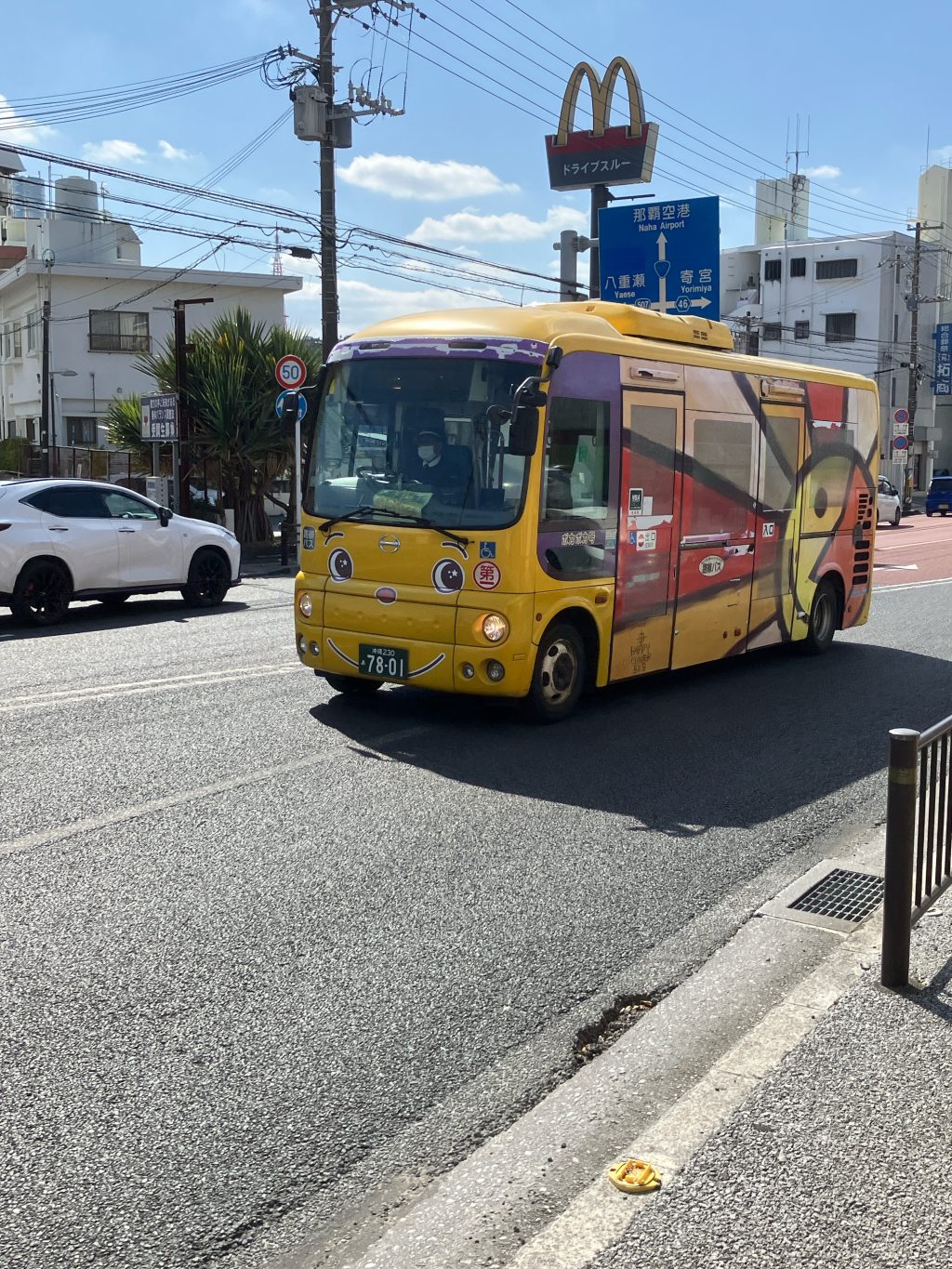
[Uemachi]
Graduation thesis submitted!!!
This is Kanaoka, a B4 student.
Today, I successfully submitted my graduation thesis.
As it was my first time writing a thesis, I am truly grateful for all the support and guidance from my professor and senior students.
I appreciate the other B4 members, Matsunaga and Tanaka who were working hard together till the last moment!
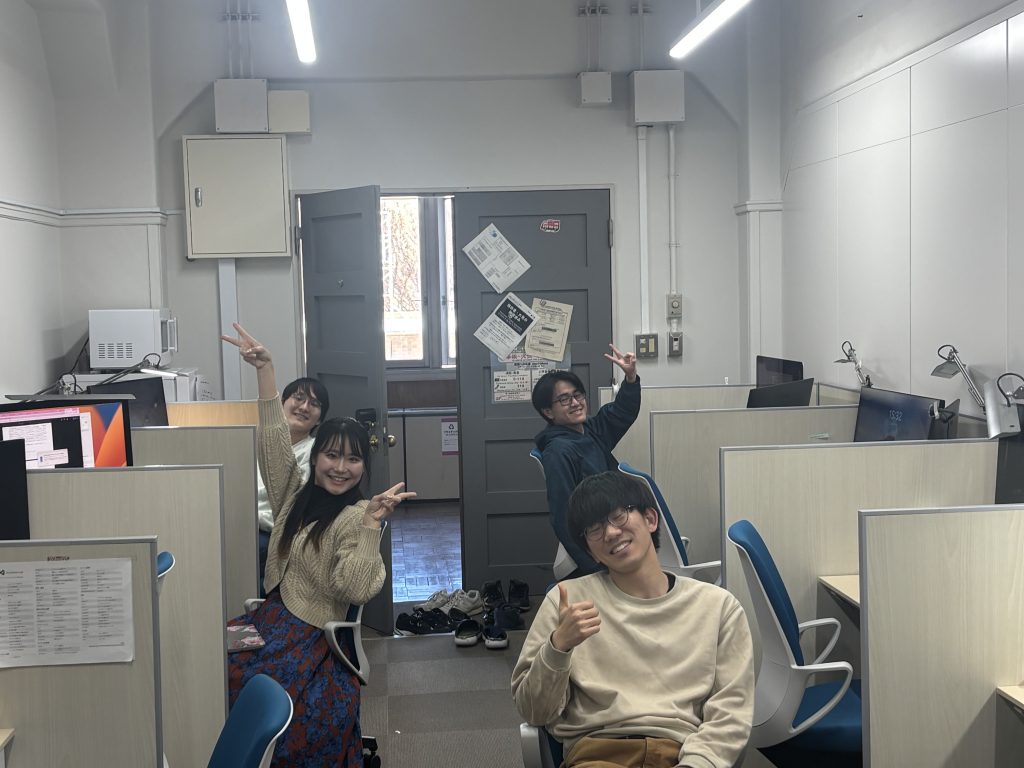
[Kanaoka]
Master’s thesis submitted!
I’m Kaori, M2 student. I submitted my Master’s thesis with a kindful support of Fukuda sensei.
I will do my best till the final presentation on upcoming Tuesday.
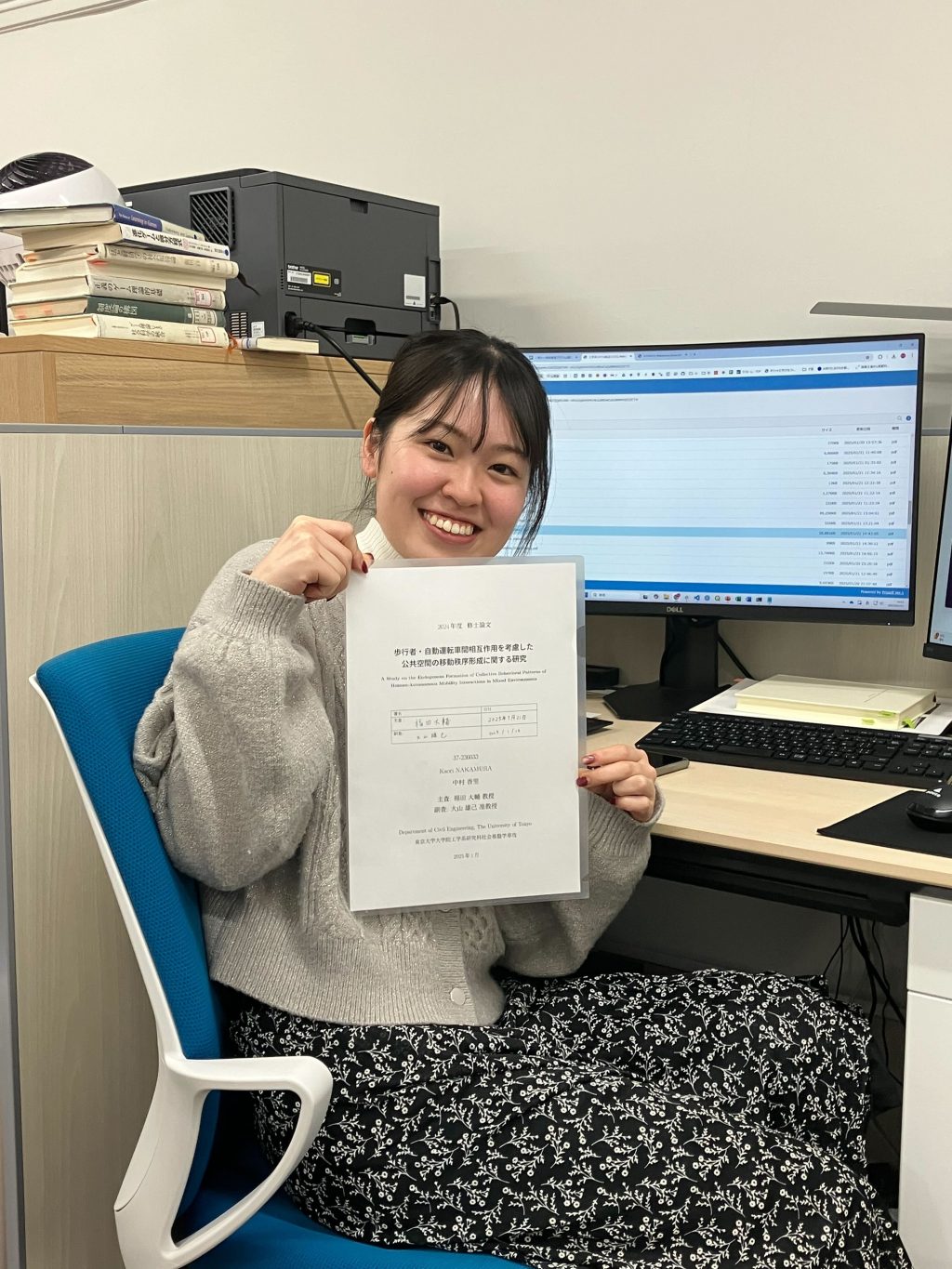
[Nakamura]



